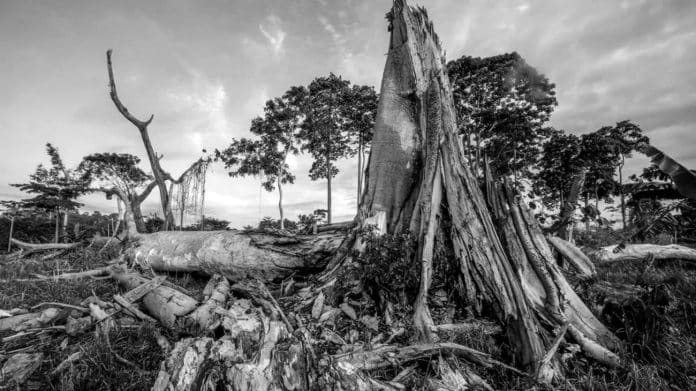Major Environmental Problems in Tanzania – Deforestation, Overgrazing and More
Tanzania, like many other countries, faces several environmental problems that have significant impacts on its ecosystems, wildlife, and people. Some of the key environmental challenges in Tanzania include the following:
Water Challenges
Dar es Salaam, Tanzania, May 6, 2019, The Great Ruaha River in Tanzania used to flow all year, supplying Ruaha National Park before entering the Mtera-Kidatu hydroelectric system, which provides around 50% of the nation’s installed hydropower capacity.
Then, as a result of significant, unchecked water harvesting for agricultural irrigation upstream, the river began to dry up for as long as a few weeks each year. Today, the Great Ruaha has dry spells for a few months out of the year.
The Minister of State for Environment and Union Affairs, January Mkama, remarked, “We confront enormous issues in managing our environment, especially the Great Ruaha, as the zero-flow episodes rise each year.” “The river was dry for 210 days in 2018.”
The Great Ruaha is one of several essential endowments presently in danger as a result of environmental deterioration, according to the World Bank’s recently released Tanzania Country Environmental Assessment (CEA). Environmental Trends and Threats, and Pathways to Improved Sustainability, highlight how Tanzania’s natural resources are being degraded and constrained in their capacity to continue producing products and services due to conflicting demands for them and free access to many of them.
Poverty Line
Around 21.3 million Tanzanians live below the poverty line, making their country one of the poorest in Africa. Many of these people rely on natural resources for their survival. Despite the consistent economic expansion, Tanzania’s gross wealth per person—the total of all-natural, physical, and human capital—declined from 1995 to 2014. The research emphasizes that the decline in all renewable naturally occurring capital per capita of 35 percent across the last two decades and of all renewable natural non-land capital per capita of 47 percent is due to the fast population expansion that outpaced investment.
Some of the issues mentioned by the study on the current environmental problems in Tanzania include more “conventional” natural and environmental resource issues, such as deforestation, biodiversity loss, and degradation of water and land resources. These issues are relevant for remote regions, where natural resources are subjected to demands. For instance, the county has an approximated net loss of forested areas of 483,859 ha annually—among the highest worldwide.
Others are connected to pollution and are more typically linked to agglomeration, industrialization, and urbanization, of which some have only recently begun. All courses and dimensions of challenges involving natural resources show that climate change is a significant “multiplier” in each case. The research highlights the urgent need to enhance resilience in all sectors while fostering healthy natural systems that serve as buffers against those consequences and cautions that repercussions would be felt everywhere given Tanzania’s high vulnerability to climate change.
According to Daniel Mira-Salama, a co-author of the CEA and senior environmental specialist at the World Bank, “the repercussions of these difficulties are escalating and have led to a severe loss of ecosystems, conflicting demands for water and land, as well as environmental degradation.”
According to the CEA, 4 major factors—rapid population increase, economic expansion, a rise in the pace of urbanization, and climatic unpredictability and change—will exacerbate these problems. By 2050, Tanzania’s population is expected to nearly triple from its present level to 138 million people. Over 80% growth in the rural population is anticipated, which would increase the demand for natural resources. More urban areas are growing, and old cities are expanding quickly. The research states that there is a chance to advance toward cleaner production methods as the nation industrializes; by doing this, environmental deterioration would be reduced and the amount of pollution from industries would be limited.
The co-author of the CEA and senior environmental specialist at the World Bank, Veruschka, stated, “Pollution prevention today prevents costly cleaning measures tomorrow and provides the potential for greater quality of mass commodities such as soil, air, and water.” Climate change and variability will worsen environmental issues, requiring thorough environmental management and planning tools, as per this report.
Growth Pathways Identified
The research identifies four growth pathways for the nation based on the causes and traits of the environmental challenges:
Pathway 1 suggests giving the “blue economy” and “wildlife economy” more of a push to focus on the conservation of biodiversity and freshwater and marine resources.
Pathway 2 encourages resilient landscapes because they are more resistant to uncertainties and shocks. Rural regions that balance environmental, social, and economic, functions successfully are more resilient.
Pathway 3 emphasizes the significance of contemporary fuel accessibility and minimal-impact urbanization. Households’ usage of biomass fuel should be restricted since doing so would immediately benefit ecosystems and public health. Tanzania’s urbanization must also be in line with environmental goals to reduce pollution, support sustainable living practices, and build transport and infrastructure systems that can withstand climate change.
Pathway 4 emphasizes the necessity of bolstering the nation’s institutions for better environmental management, particularly in light of pollution. According to the research, a clean environment has several advantages and is crucial for the nation’s continued, sustainable development.
For further details, you can also download the environmental problems in Tanzania pdf.
For more information on the weather click here!
































